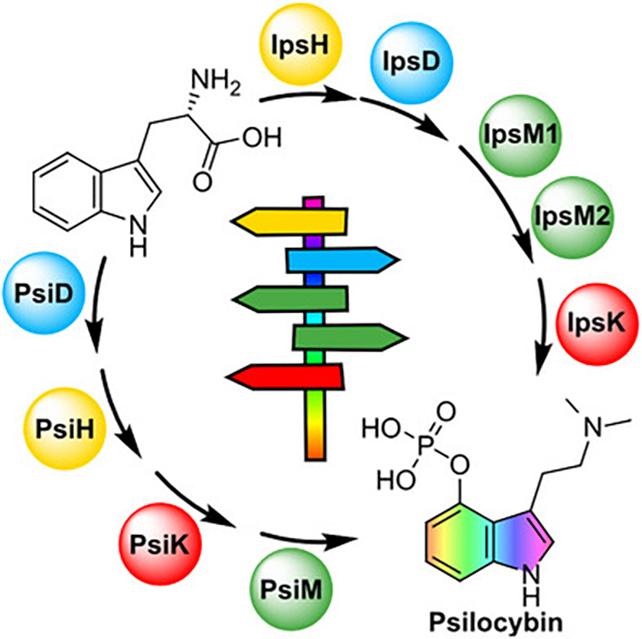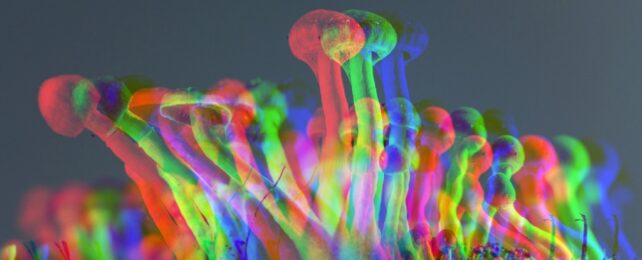A species of mushroom has been found producing psilocybin using a completely different pathway to the one used by 'magic' mushrooms, suggesting the psychotropic compound evolved at least twice.
The discovery has implications for our understanding of evolution and synthetic psilocybin production.
The study is the work of a team from Friedrich Schiller University Jena in Germany and the University of Innsbruck in Austria, and it builds on earlier research that found psilocybin present in fiber cap Inocybe mushrooms – without the genes used to manufacture it in Psilocybe mushrooms, where it was first identified.
Related: This Rare Fungus Can Kill Cancer Cells, And We Finally Know Its Secret
"It was like looking at two different workshops, but both ultimately delivering the same product," says microbiologist Tim Schäfer, from Friedrich Schiller University Jena.
"In the fiber caps, we found a unique set of enzymes that have nothing to do with those found in Psilocybe mushrooms. Nevertheless, they all catalyze the steps necessary to form psilocybin."

Through the use of protein models, the researchers were able to establish the sequence of chemical reactions making psilocybin. Given that these two types of mushroom are in distinct families, they must have independently evolved their own psilocybin production processes.
That raises the question of why. These mushrooms are in no way similar in the way they live – Psilocybe mushrooms grow on dead wood, while Inocybe mushrooms grow on living trees – but something in both their environments has favoured the evolution of psilocybin-laden fruiting bodies. The need to ward off predators is one hypothesis put forward by the researchers.
"The real answer is: we don't know," says Friedrich Schiller University Jena microbiologist Dirk Hoffmeister.
"Nature does nothing without reason. So there must be an advantage to both fiber cap mushrooms in the forest and Psilocybe species on manure or wood mulch producing this molecule – we just don't know what it is yet."
In humans, psilocybin gets converted into another compound, psilocin: it's enough to trip out the wiring of the brain, leading to warped interpretations of self-perception, time and space, and the surrounding environment.
Recent studies have suggested that the mind-altering properties of psilocybin could be useful in treating depression and head trauma. Research has also found that the compound has properties that can extend lifespan, at least in terms of individual human cells. At the same time, we also know that too much psilocybin can overload the brain.
Discovering a new way that it's made in nature could help us develop novel methods to produce the compound in the lab and explore its risks and potential as a pharmaceutical.
"This concerns the biosynthesis of a molecule that has a very long history with humans," says Hoffmeister.
"Psilocybin not only triggers psychedelic experiences, but is also considered a promising active compound in the treatment of therapy-resistant depression."
The research has been published in Angewandte Chemie International Edition.
